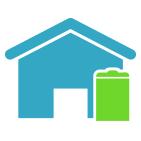Common Misunderstandings in Recycling
Posted on 13/12/2024
Recycling is an essential practice for sustainable living, yet it is often surrounded by misconceptions that can hinder its effectiveness. To maximize the benefits of recycling, understanding common misunderstandings is crucial. This article aims to clarify these misunderstandings and provide actionable tips for proper recycling.
1. "Everything Can Be Recycled"
One of the most widespread misunderstandings is the belief that all materials can be recycled. In reality, not all items are recyclable. Common non-recyclable items include plastic bags, styrofoam, and certain types of glass. Contaminants like food residue or liquids can also render recyclable items non-recyclable.

2. "Recycling Is the Same Everywhere"
Recycling guidelines vary by location, and what is recyclable in one area may not be in another. Local recycling programs often have specific rules, so it's essential to check local guidelines to ensure proper recycling.
3. "Rinsing Is Unnecessary"
Many people believe that rinsing recyclable items is not necessary. However, food and liquid contaminants can ruin the recycling process. Before putting items in the recycling bin, make sure they are clean and dry.
4. "Plastic Bags Are Recyclable at Curbside"
Despite popular belief, most curbside recycling programs do not accept plastic bags. These bags can clog machinery at recycling facilities. Instead, take plastic bags to designated drop-off locations.
5. "Recycling Uses More Energy Than It Saves"
Some skeptics argue that recycling uses more energy than it conserves. While the recycling process does consume energy, it generally uses less than producing new materials from scratch. The energy savings vary by material, but overall, recycling substantially reduces energy consumption.
6. "Circular Economy Doesn't Affect Me"
A circular economy is an economic system aimed at eliminating waste and the continual use of resources. Participating in recycling contributes to the circular economy by ensuring materials are reused and repurposed, thus reducing waste and saving resources.
Pros and Cons of Recycling
Pros:
- Reduces waste sent to landfills and incinerators.
- Conserves natural resources such as timber, water, and minerals.
- Saves energy, reducing greenhouse gas emissions and fighting climate change.
- Creates jobs in the recycling and manufacturing industries.
- Promotes sustainability and responsible consumer behavior.
Cons:
- Recycling contamination can ruin batches and increase processing costs.
- Recycling processes can be energy-intensive and are not entirely emission-free.
- Not all materials can be recycled, necessitating proper sorting and education.
- The recycling market can be volatile, affecting the economic viability of recycling programs.
Tips for Proper Recycling
- Know Your Local Guidelines: Familiarize yourself with local recycling rules and adhere to them.
- Rinse Before Recycling: Clean and dry recyclables to prevent contamination.
- When in Doubt, Throw it Out: If you're unsure whether an item is recyclable, it's safer to dispose of it in the trash.
- Use Reusable Items: Reduce the need for recycling by opting for reusable bags, bottles, and containers.
- Educate Yourself: Stay informed about recyclable materials and the benefits of recycling.

Takeaways
Understanding common misunderstandings in recycling can significantly improve recycling practices. By educating ourselves and others, we can ensure that recycling efforts are more effective and beneficial for the environment.
Conclusion
Debunking common recycling misconceptions is essential for making recycling more efficient and reliable. By following tips and guidelines, we can contribute positively to a sustainable future.
Recycling may seem straightforward, but it's more complex than many realize. Adhering to best practices and staying informed can make a significant difference in recycling's environmental impact.










